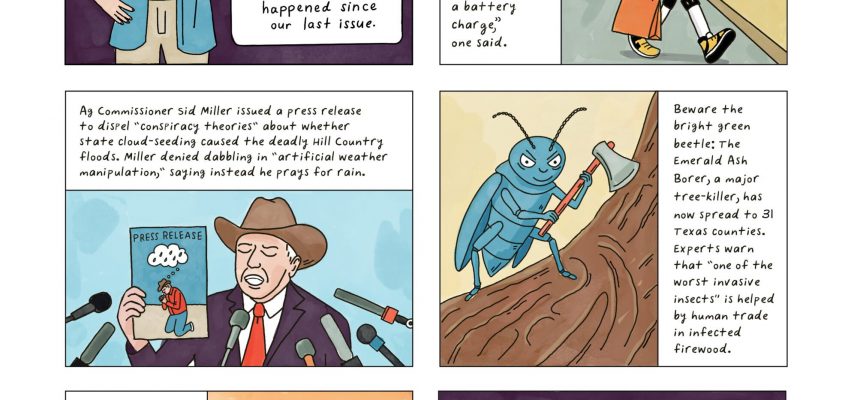Life insurance is designed to protect against a loss of income if a loved one should die. However, this safeguard isn’t just for traditionally employed adults. The value stay-at-home parents provide should also be part of calculating how much life insurance a family needs.
Related Articles
Fed’s favored inflation gauge accelerates slightly in August
Trump to put import taxes on pharmaceutical drugs, kitchen cabinets, furniture and heavy trucks
Microsoft reduces Israel’s access to cloud and AI products over reports of mass surveillance in Gaza
Apple says EU’s sweeping digital rules delay new features for Europeans and seeks their repeal
Instagram’s ‘deliberate design choices’ make it unsafe for teens despite Meta promises, report finds
In America, 18% of parents don’t work for pay, according to a Pew Research Center analysis of the most recent U.S. Census Bureau data. But that doesn’t mean they’re not adding to the household balance sheet. In fact, the U.S. Bureau of Labor Statistics (BLS) suggests the work of stay-at-home parents could be the financial equivalent of an administrative services and facilities manager plus a teacher all rolled into one.
Not just for wage earners
For many years, life insurance focused on replacing the income of breadwinners, says Chris Mouzon, an independent insurance agent based in Pennsylvania and co-founder of financial services firm United Agency. But increasingly, the invaluable support a stay-at-home parent provides is becoming part of life insurance conversations.
“They bring an economic value to the household,” Mouzon says. If a stay-at-home parent dies, “you’re going to need a financial bump to just make sure household things, your children, and your lifestyle still get taken care of.”
It can be uncomfortable to put a dollar value on anyone’s life, but it’s also an important conversation families should have to make certain there’s enough money after a loss. Ensuring life insurance takes into account what a stay-at-home parent provides can protect your family’s financial future.
Considering the value stay-at-home parents provide
Assessing the financial effects of losing a stay-at-home parent can be tricky, says Angela Moore, an Orlando-based certified financial planner and a financial guide at Fruitful. “If you are a stay-at-home parent or primary caregiver and something happens to you, that would cause a ripple effect over many years.”
While much of what a parent provides is hard to quantify, most household responsibilities have a price tag. And depending on where you live, it can be a steep one. Let’s break down what your family might need help with — and how much it would cost — if a stay-at-home parent is no longer there picking up the slack.
Caretaking
Many stay-at-home parents provide care for members of the family, specifically children. And while it is a labor of love, it can be a demanding and expensive job. U.S. Department of Labor data shows families spend from $6,552 to $15,600 per year for full-time child care for just one child.
Household management
Stay-at-home parents wear a lot of hats, and running a household is often one of them. Here are a few tasks that could fall by the wayside without an extra hand to help.
Cleaning
Wiping down surfaces and picking up the toys might be all in a day’s work for a stay-at-home parent, but don’t underestimate how much time these chores occupy and what it might cost to hire help. The rate for housekeeping services hovers around $16 per hour, according to the most recent BLS estimate.
Laundry
Keeping a steady supply of clean clothes is a challenge, but outsourcing that labor also comes at a cost. For instance, weekly wash-and-fold service in New York City costs about $1.99 per pound, with larger items like bedding demanding additional fees.
Cooking
Food preparation for a family is serious business. The average American household already spends $3,933 per year on eating outside the home, according to BLS data, but that bill could quickly balloon without someone to help put dinner on the table.
Shopping
Although most families can get most goods or groceries delivered, shopping is still a mundane but necessary task. Without someone to run those errands, you might need to hire a personal shopper or rack up extra fees for delivery services.
Managing finances and more
This is by no means an exhaustive list of the many household responsibilities parents juggle. Your family might have a stay-at-home parent who also takes charge of yard work, home repairs, pet care or balancing the household budget. Make sure to factor that work into your calculation.
Deciding how much coverage your family needs
When trying to decide how much life insurance stay-at-home parents should have, you should also consider including these additional costs:
Funeral expenses. The median cost of a funeral with a viewing and burial tops $8,300, according to the National Funeral Directors Association.
Education costs. Decide what you’d need to cover educational expenses like college or private school tuition.
Temporary income replacement. After the death of a stay-at-home parent, time off from work to grieve and to set up alternative arrangements for care is essential.
Debt payoff. Include any credit card debt or loans the stay-at-home parent holds that might need to be repaid.
Additional financial support for children. Think about how you might like to support children financially not just in childhood but also early adulthood.
If calculating these expenses feels overwhelming, Moore says family life insurance policies usually end up in the same ballpark. “After I ask these questions, I add it all up and it usually falls somewhere between $1.5 million to $2 million for most regular young families.”
Life insurance options for stay-at-home parents
Securing life insurance for a stay-at-home parent doesn’t have to be expensive or complicated. In fact, for most families, term life insurance —the most affordable type of life insurance—will be sufficient.
This is especially true if you’re young and healthy. For example, a healthy 30-year-old non-smoker might pay $18 a month, on average, for a 20-year, $500,000 term life policy, according to life insurance brokerage Policygenius.
Mouzon advises stay-at-home parents to consider an individual term policy of 20 to 30 years with living benefits, a policy feature that lets you access your death benefit early if you’re diagnosed with a serious illness. “That living benefit will take care of the sickness side and in the event someone gets cancer, stroke, a heart attack, or some type of chronic or critical illness, this policy will pay out.”
If you have a relatively young family, getting coverage sooner rather than later may also save money in the long run, because young, healthy people qualify for the lowest life insurance rates.
“You’re the youngest and healthiest you’re gonna be,” Mouzon says. “So you might as well just pay attention to it now while it’s the cheapest.”
More From NerdWallet
5 Different Types of Life Insurance
Life Insurance: How to Find the Right Policy for You
What Is Term Life Insurance?
Kaz Weida writes for NerdWallet. Email: kweida@nerdwallet.com.
The article Why Stay-at-Home Parents Need Life Insurance originally appeared on NerdWallet.




